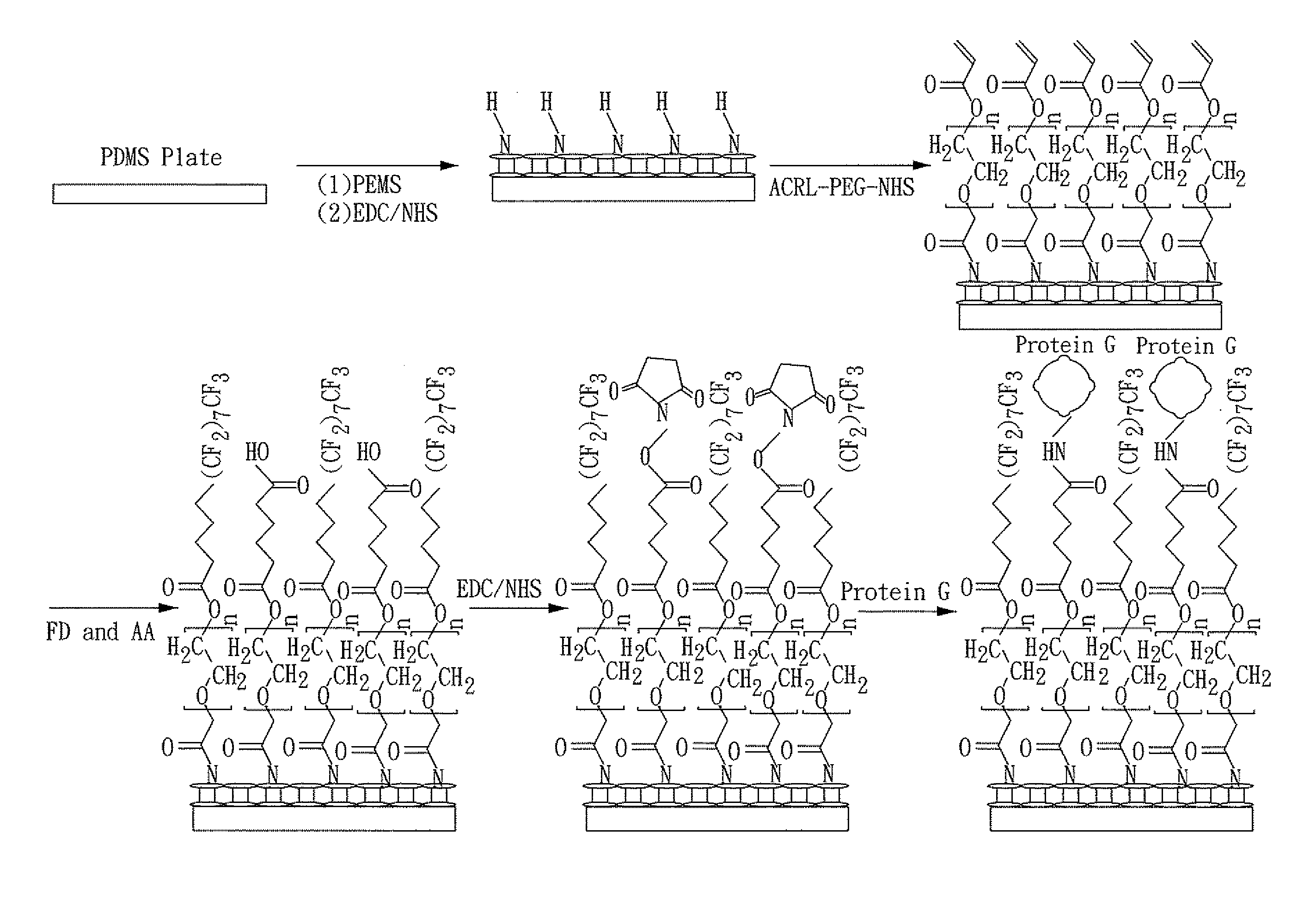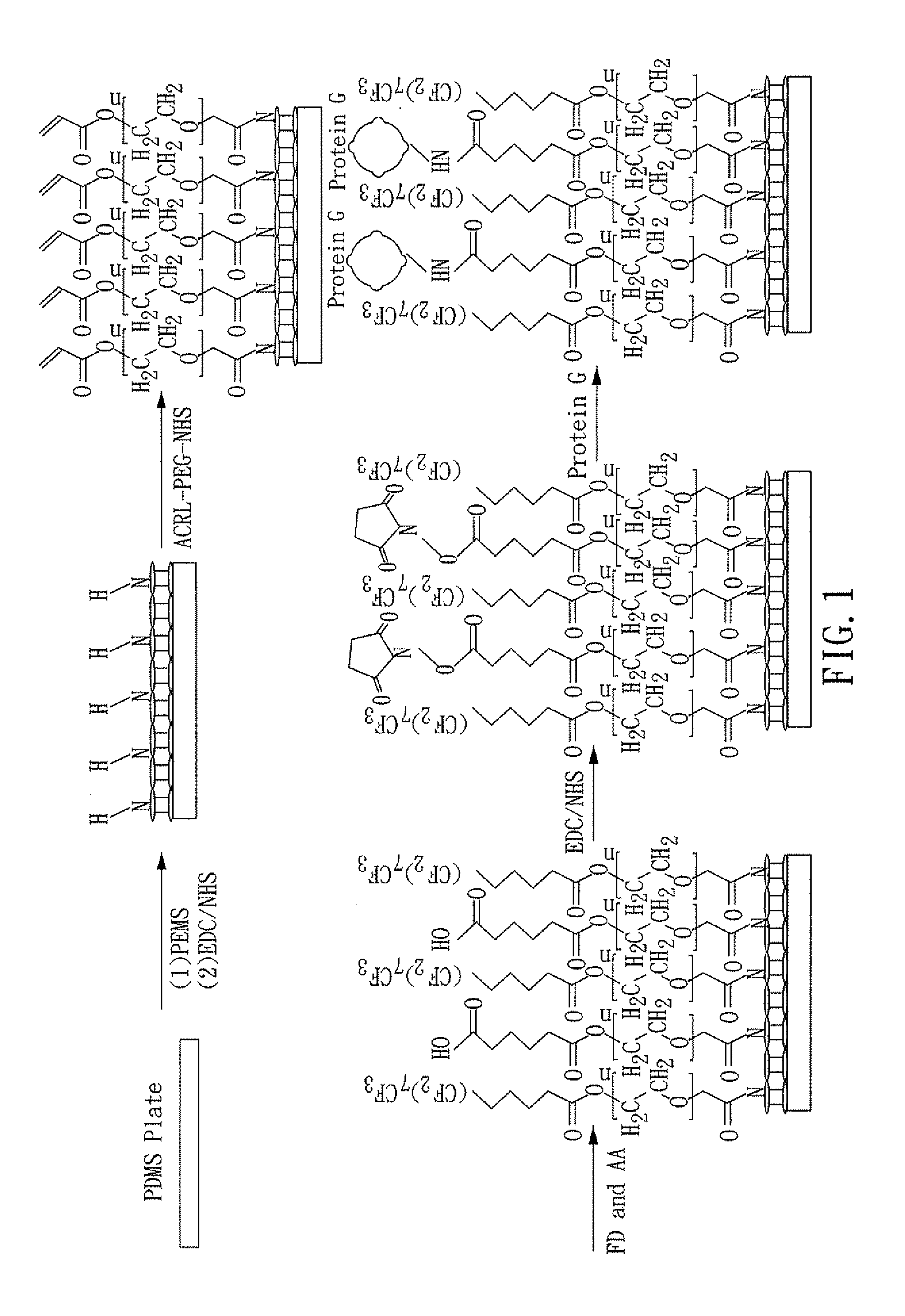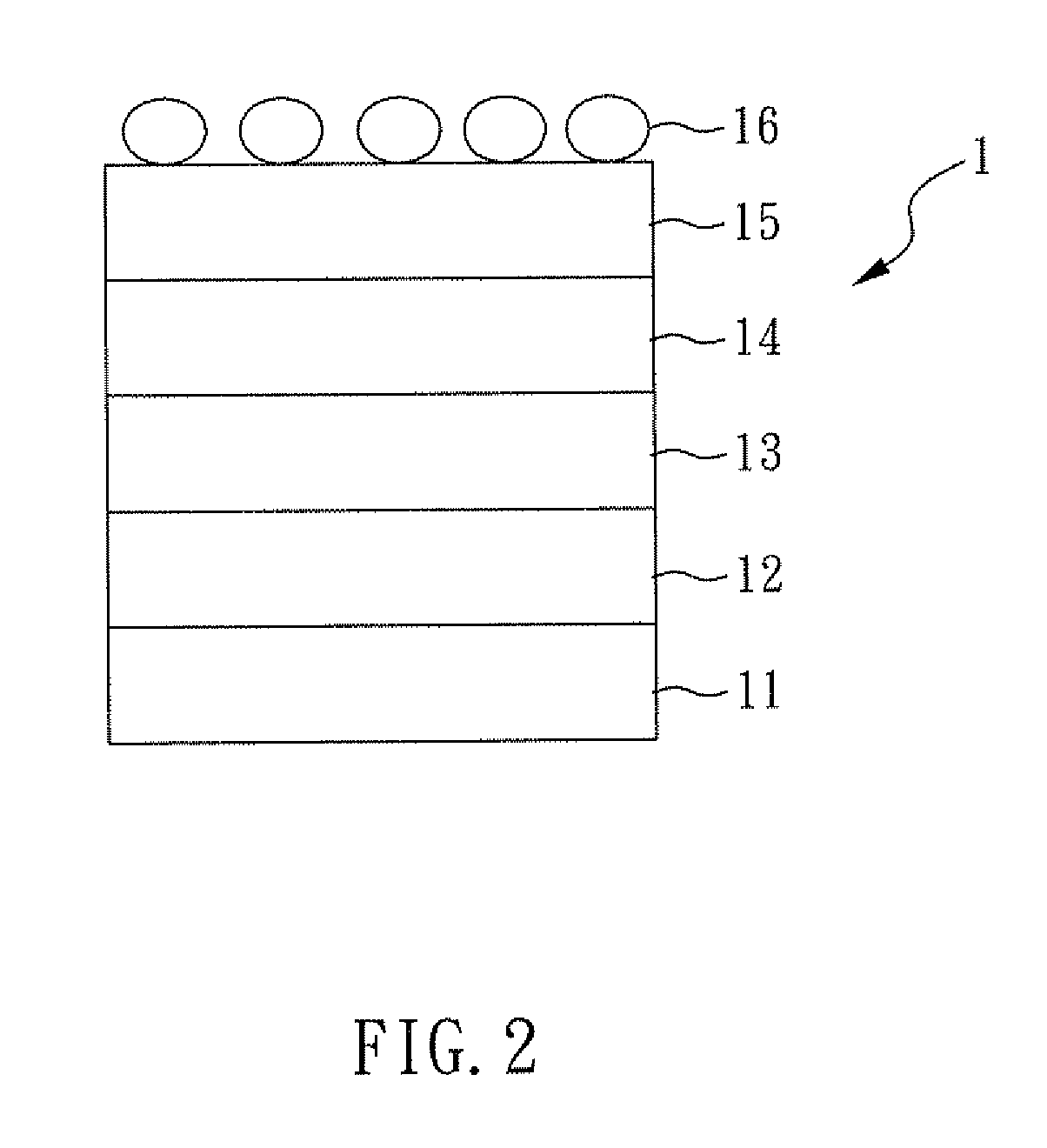Chip for protein detection, method for manufacturing the same, and method for detecting protein by using the same
- Summary
- Abstract
- Description
- Claims
- Application Information
AI Technical Summary
Benefits of technology
Problems solved by technology
Method used
Image
Examples
embodiment 1
A Chip for Protein Detection with a PDMS Substrate Preparation of a Chip for Protein Detection
[0038]The process for forming the chip for protein detection of the present embodiment is shown in FIG. 1.
[0039]To form the PDMS prepolymer, the PDMS oligomer was mixed with a curing agent at a weight ratio of 10:1, and the resulting mixture was degassed in a vacuum for 30 min. The degassed PDMS mixture was poured on the stainless steel plate for matrix assisted laser desorption / ionization instrument (MALDI, Waters) and then cured at 70° C. for four hours. Once peeled from the stainless steel plate, the resulting 12×8 array pattern (2.5 mm id for each spot in a space of 5 cm width×4 cm length) of the PDMS substrate was used as the grid for solution printing.
[0040]The bare substrate was then modified with polyelectrolyte multilayers (PEMS). The process for modifying the bare substrate is briefly described as follow. First, the bare PDMS substrates were activated by an oxygen plasma, subseque...
embodiment 2
A Chip for Protein Detection with a Glass Substrate Preparation of a Chip for Protein Detection
[0061]The process for forming the chip for protein detection of the present embodiment is similar to that of Embodiment 1, except that PDMS substrate is substituted with a glass substrate.
[0062]First, the bare glass substrate was activated by an oxygen plasma, and subsequently coated with 3-Aminopropyl triethoxysilane (APTES) to form a covalent modification layer on the surface of the glass substrate. Then, ACRL-PEG-NHS (1000 μg / mL in PBS, pH 7.4) was added to react with the exposed amine group of APTES molecules in the covalent modification layer. Therefore, an intermediate layer was formed on the glass substrate.
[0063]The same process for forming the fluorinated layer described in Embodiment 1 was performed in the present embodiment to form a fluorinated layer on the glass substrate. Then, the same process for coating the protein G described in Embodiment 1 was also performed in the pres...
PUM
 Login to View More
Login to View More Abstract
Description
Claims
Application Information
 Login to View More
Login to View More - R&D
- Intellectual Property
- Life Sciences
- Materials
- Tech Scout
- Unparalleled Data Quality
- Higher Quality Content
- 60% Fewer Hallucinations
Browse by: Latest US Patents, China's latest patents, Technical Efficacy Thesaurus, Application Domain, Technology Topic, Popular Technical Reports.
© 2025 PatSnap. All rights reserved.Legal|Privacy policy|Modern Slavery Act Transparency Statement|Sitemap|About US| Contact US: help@patsnap.com



